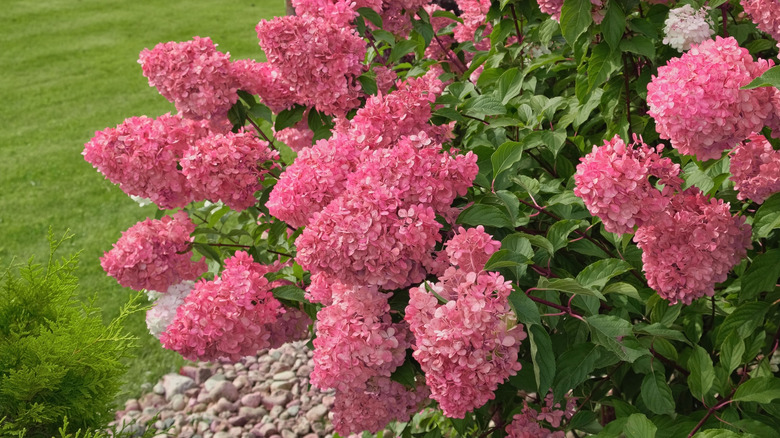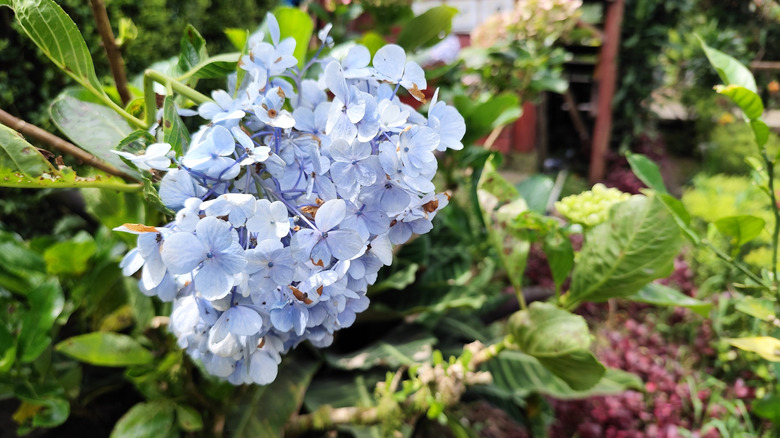Should You Add Gravel To The Soil When Growing Hydrangeas? Here's The Truth
Adding gravel to garden beds or containers to improve drainage is a tempting shortcut, but when it comes to hydrangeas, this practice can backfire. Gravel doesn't help water flow more easily through soil, despite common misconceptions that it can be used as a drainage material to prevent plants from getting too much water. In fact, you might want to avoid putting gravel and rocks in a raised garden bed altogether because it can actually hold that water in place above the gravel line, potentially leading to root rot. Hydrangeas prefer consistently moist but well-draining soil, but gravel can create the exact opposite condition — trapping moisture right where roots are most vulnerable.
What's more, gravel absorbs and radiates heat, which can stress plants that are sensitive to heat. Heat-sensitive species of hydrangeas are prone to wilting and leaf scorch in hot conditions. Gravel mulch can also raise soil temperatures and reduce beneficial microbial activity. Considering that you already have to think twice before planting hydrangeas in your garden due to their challenges, the last thing you want to do is accidentally damage their roots by using gravel.
What to use instead of gravel when planting hydrangeas
There are many mistakes everyone makes when planting hydrangeas, but gravel use is an easy one to solve. Instead of using gravel, gardeners should consider organic materials like bark or compost, which maintain even moisture, moderate soil temperature, and improve soil structure over time. This approach not only supports healthy root systems but also aligns with long-term sustainability in home gardens.
Unlike gravel, organic mulch does not compact the soil or create heat stress around sensitive roots. It also improves water infiltration. A 2- to 4-inch layer, spread evenly on top of the garden soil around the base of hydrangeas (but kept away from direct contact with stems), offers protection without the risks associated with gravel. This is especially helpful for bigleaf hydrangea (Hydrangea macrophylla), which is prone to drought stress and benefits from stable moisture levels. Choosing the right mulch may seem minor, but it makes a big difference in plant health, flower production, and overall garden resilience.
While gravel looks tidy, organic mulch delivers both aesthetic appeal and essential function — a win-win for both gardeners and their hydrangeas. If you're considering decorative alternatives like rock mulch, you might want to consider the downsides (such as increased soil temperature and weed germination), especially when dealing with delicate shrubs like hydrangeas.

